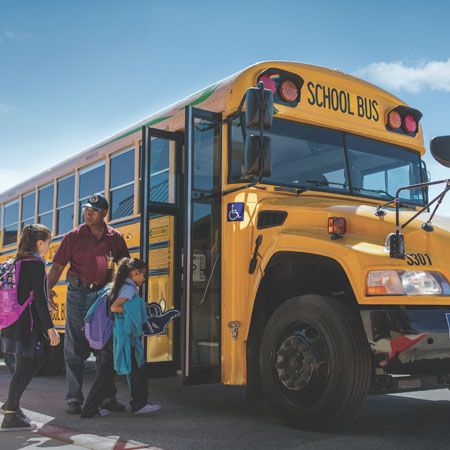
Going Green in Your Community
Going Green in Your Community

(Family Features) Preserving your community for future generations can take many forms. It might mean volunteering with local organizations and participating in community improvement initiatives. Taking steps to protect the environment is another critical way to ensure your community remains safe and livable for generations to come.
These ideas show that going green can be as simple as making small modifications to everyday actions you already take.
Donating Unwanted Goods
Landfills are overflowing with items that still have plenty of useful life. Often, those discarded items could be repurposed to provide an affordable option to those who can’t afford new, full-price versions. Before loading up your trash can, consider donating things like household goods and clothing that could still serve a purpose. Numerous organizations accept gently used goods that they either distribute directly to those in need or sell to the general public, with proceeds benefiting a specific cause or population. Look into the options in your area to find the best fit for items you have that can be donated.
Rethinking Transportation
 Pollution from transportation accounts for 29% of the United States’ emissions, according to the Environmental Protection Agency (EPA). That’s a higher percentage than any other category measured by the EPA. Carpooling, public transportation and even carefully planning your route are ways you can take personal accountability to help reduce the problem.
Pollution from transportation accounts for 29% of the United States’ emissions, according to the Environmental Protection Agency (EPA). That’s a higher percentage than any other category measured by the EPA. Carpooling, public transportation and even carefully planning your route are ways you can take personal accountability to help reduce the problem.
Another way to improve transportation emissions is by talking to your school district about its school bus choices. Diesel school buses are not only expensive to operate, but they are harmful to children’s health, the community and the climate, according to data compiled by the Propane Education & Research Council. Conversely, propane reduces harmful emissions that impact student health and air quality in the community. By advocating for your district to convert to a more environmentally friendly transportation option, such as propane, you can help further reduce harmful emissions in your community.
Find more information about propane-powered buses at BetterOurBuses.com.
Recycling and Composting
Another way to reduce landfill waste is recycling and composting. Many of the items you throw away can be recycled into all-new materials. For example, recycled plastic can be used in a wide range of products, from sleeping bags and backpacks to dishes and reusable water bottles. Food waste represents a large share of landfills, too. Eventually it will biodegrade, but composting what you can at home gives you nutrient-rich material you can use to support your garden or lawn with healthier soil and less need for pesticides.
Cleaning with Natural Products
Keeping your home clean takes more than a little elbow grease, but the harsh chemicals found in many household cleaners are actually quite damaging. The chemicals can be poisonous or contain allergens that negatively impact your home’s air quality. Natural cleaners are often more cost-efficient, so you can enjoy cleaner air and minimize your impact on the environment.
Taking Advantage of Natural Light
If you’re in the habit of flipping on a light switch as you walk in a room, next time pause and consider whether you really need additional light. During daylight hours, many rooms offer more than enough natural light. Sunlight can also help warm spaces naturally when it’s cool outdoors, so throw open the curtains and let those warm, bright rays shine. If you do need additional light, consider relying on task lighting to illuminate your project rather than an overhead light that consumes more electricity.
Benefits of Propane School Buses
 Over the last several decades, there have been many advances in student transportation. However, one area that could still use improvement is the number of students who ride to school on diesel buses that pollute the air. Today, there are two meaningful energy choices for clean student transportation: propane and electric. While both can achieve clean transportation, propane buses cost one-third the price of electric, allowing districts to replace their aging diesel fleet faster.
Over the last several decades, there have been many advances in student transportation. However, one area that could still use improvement is the number of students who ride to school on diesel buses that pollute the air. Today, there are two meaningful energy choices for clean student transportation: propane and electric. While both can achieve clean transportation, propane buses cost one-third the price of electric, allowing districts to replace their aging diesel fleet faster.
As an affordable, available and clean energy source, propane buses make practical sense. The buses reduce harmful emissions by 96% compared to diesel. They can also meet school districts’ needs with a range of up to 400 miles and the resiliency to continue operating across all terrains and in any weather. In fact, more than 1,000 school districts have already made the switch. Every day, 1.3 million children ride to school in 22,000 propane school buses across the country.
In 2022, the EPA introduced the Clean School Bus Program, which provides $5 billion over five years (2022-26) to replace existing diesel school buses with zero-emission and low-emission models.
Through three rounds of funding, the EPA program has allocated more than $2.8 billion for 8,427 electric school buses and 440 low-emissions propane buses. However, for the same amount of money that was distributed for the electric buses (about $2.77 billion), the program could have helped fund as many as 92,635 propane buses, assuming each propane bus received the $30,000 incentive.
When considering full lifecycle emissions, replacing 92,635 diesel buses with propane buses would have reduced harmful nitrogen oxide (NOx) emissions by 24,664 metric tons over the three years the program has funded buses. By comparison, replacing just 8,427 diesel buses with electric buses will reduce NOx emissions by just 2,379 metric tons over the three years.
Propane Education & Research Council






